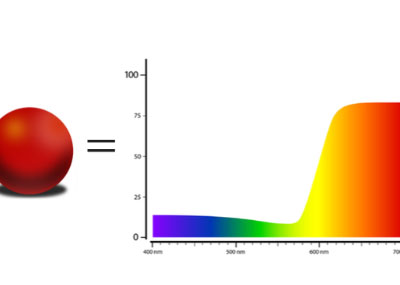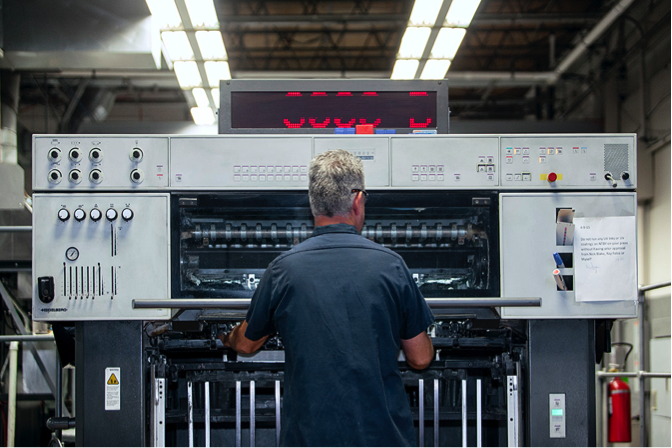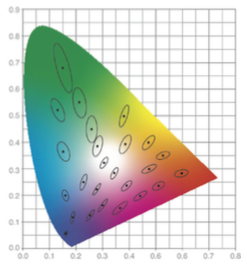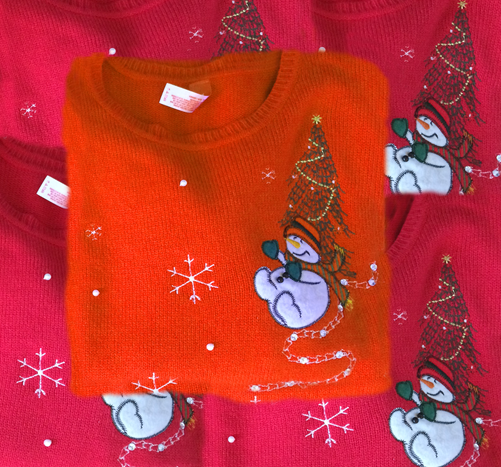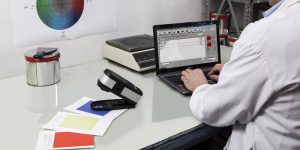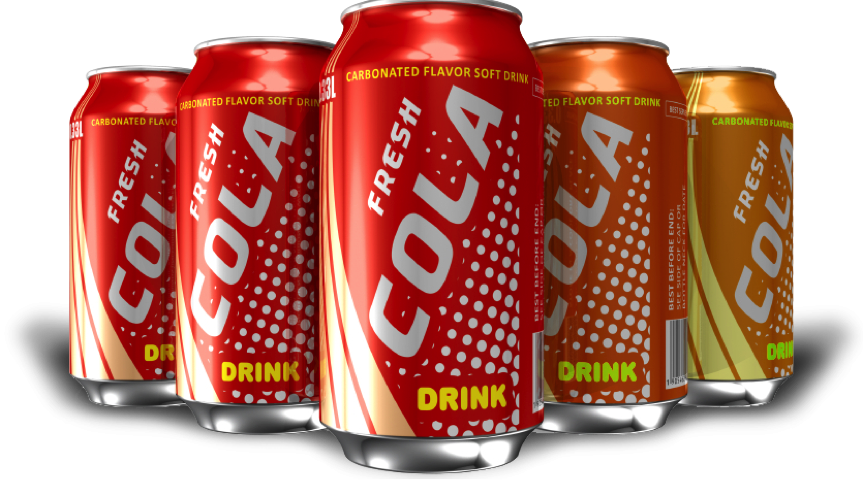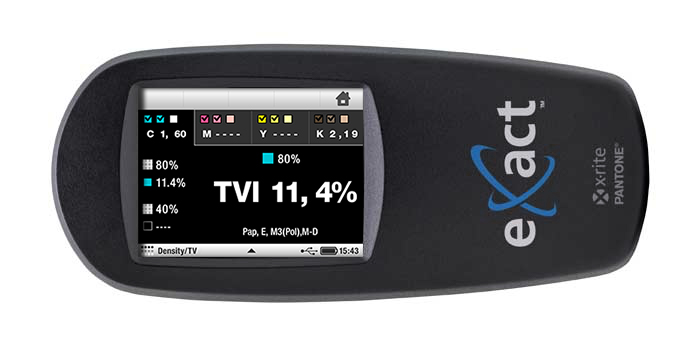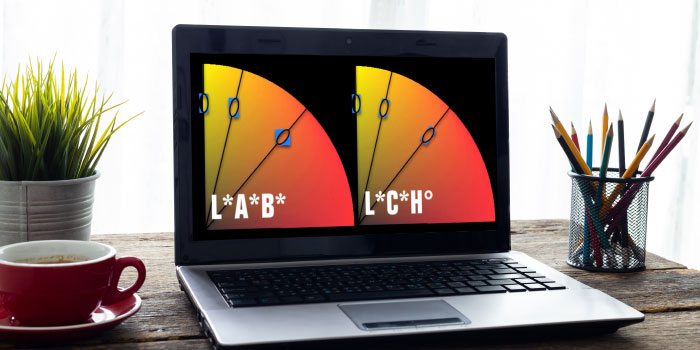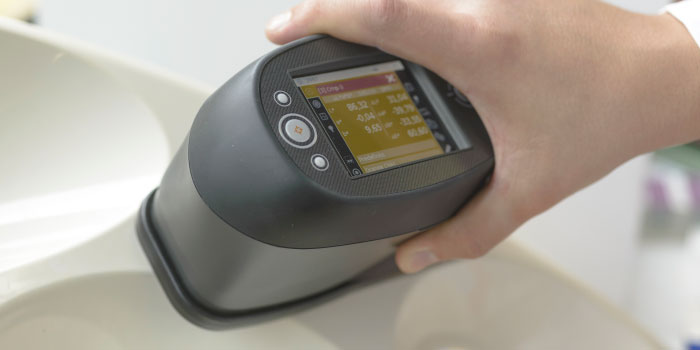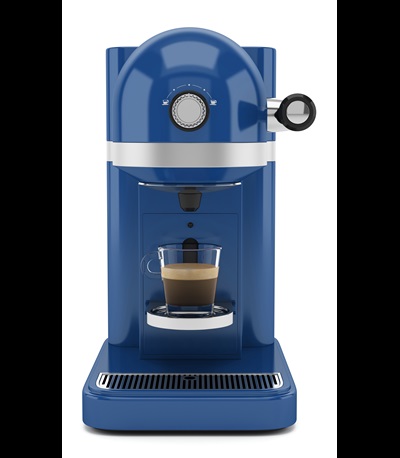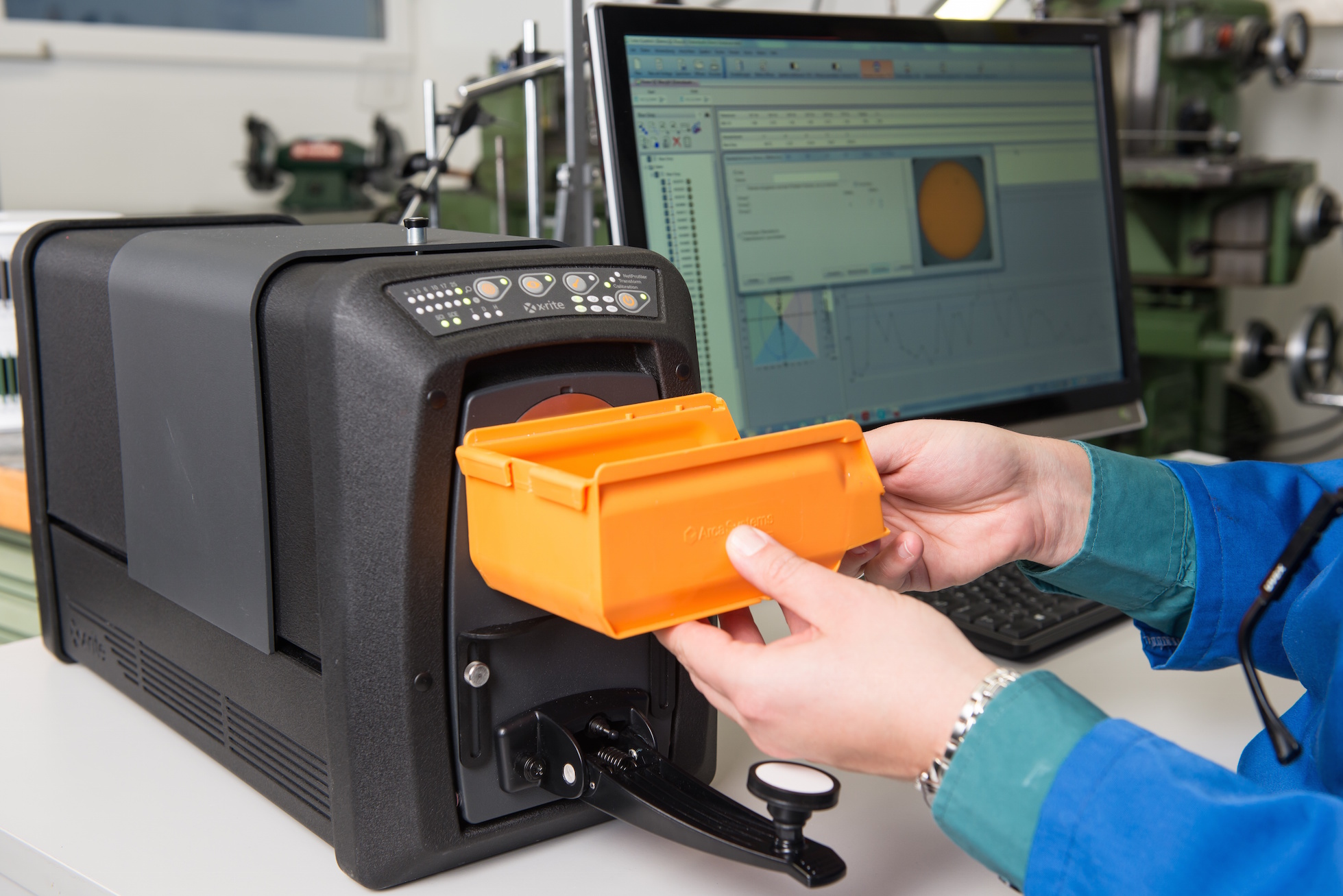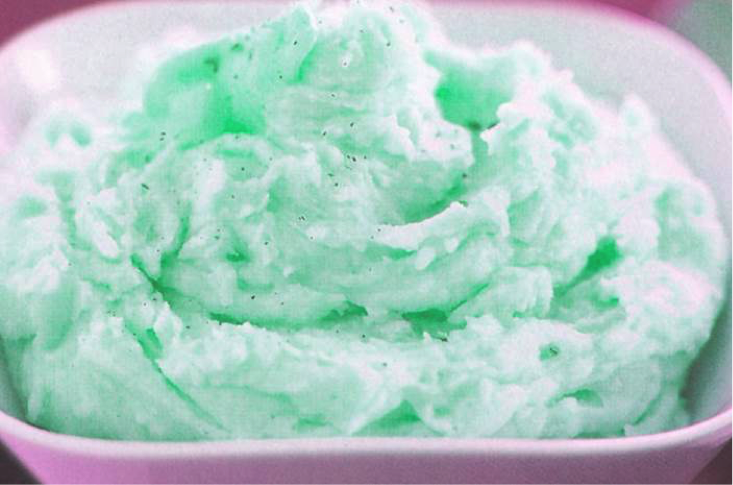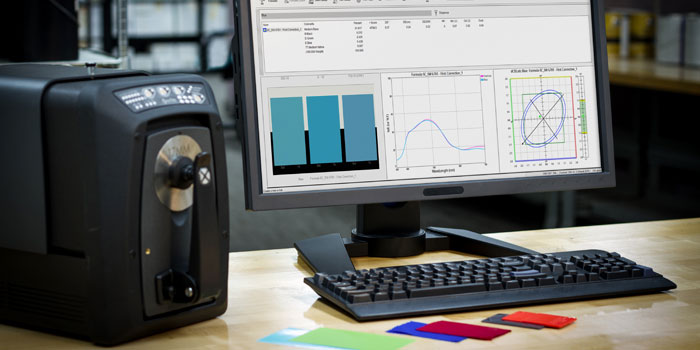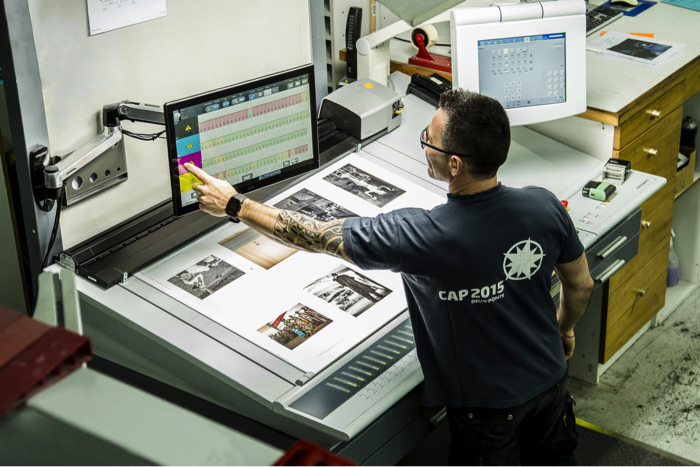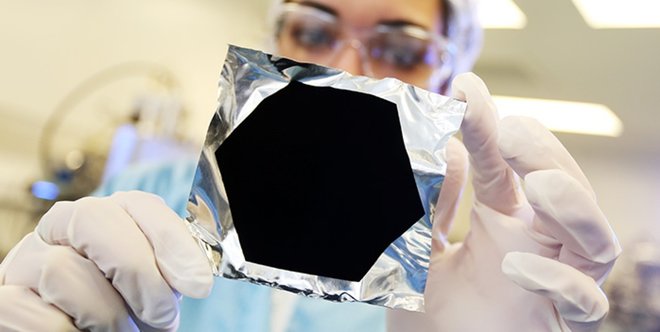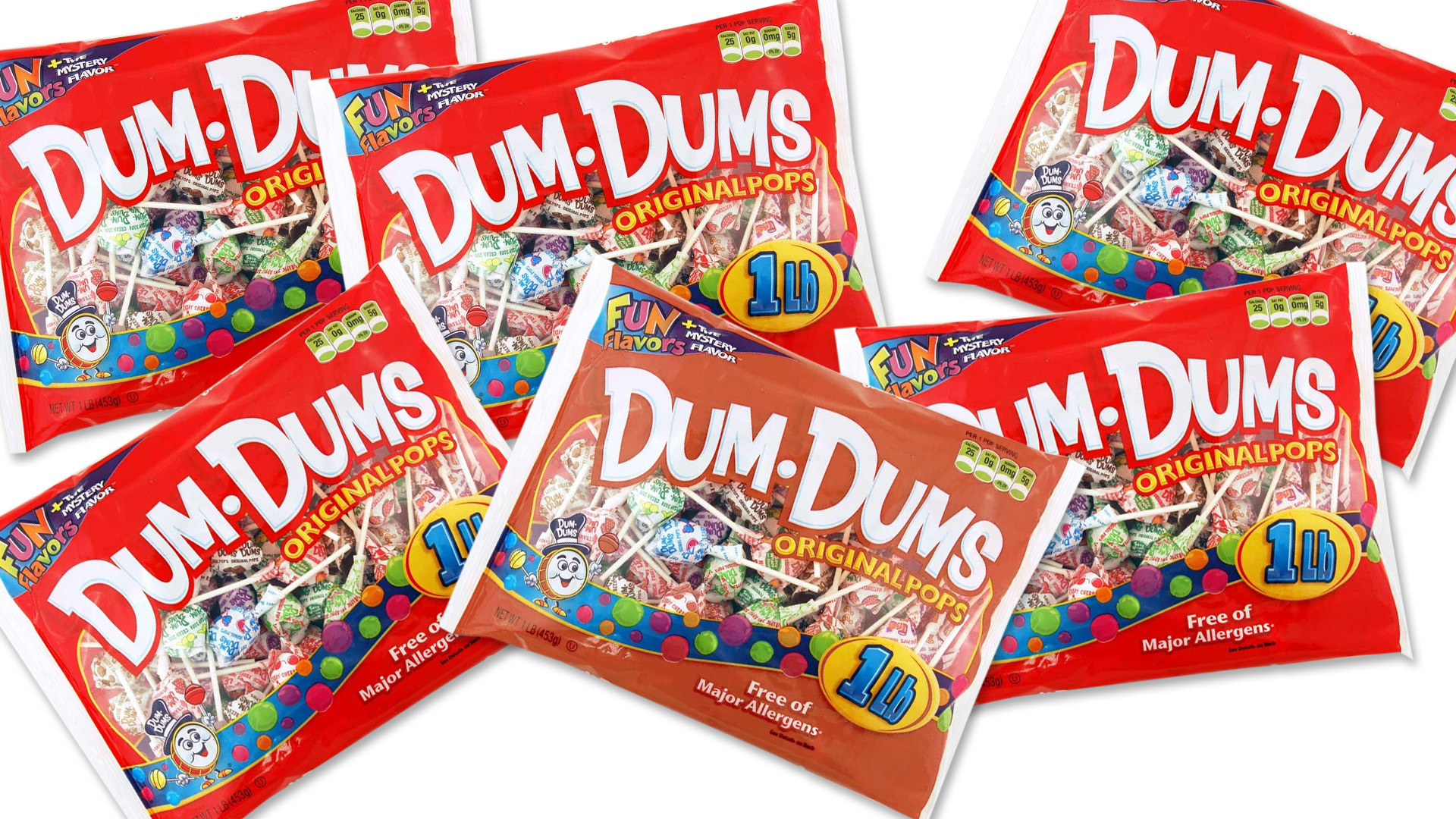자동차 분광측색계가 없다면 잘못될 수 있는 5가지 사항 자동차 분광측색계는 자동차 산업에서 중요한 도구이며, 특히 자동차 색상 관리 측면에서 중요합니다. 이러한 첨단 장비는 페인트 색상이 정확하게 일치하고, 일관되게 적용되고, 자동차 마감에 필요한 표준을 충족하도록 보장합니다. 자동차 분광측색계가 없으면 차량 페인트 작업의 품질, 효율성 및 전반적인 만족도에 영향을 미치는 여러 가지 문제가 발생할 수 있습니다. 잘못될 수 있는 다섯 가지 사항은 다음과 같습니다. 1. 부정확한 컬러 매칭 문제점: 자동차 산업에서 가장 큰 과제 중 하나는 차량 수리 또는 재도장 시에 완벽한 컬러 매칭을 달성하는 것입니다. 자동차 분광측색계가 없으면 조명, 페인트 노화 및 제조업체 색상 코드의 변화로 인해 페인트의 정확한 색조를 맞추는 것이 더 어려워집니다. 결과: 따라서 원래 영역과 재도장 영역 사이에 눈에 띄는 색 불일치가 발생하여 차량의 미적 품질에 영향을 미치고 잠재적으...
This time of year, the internet is full of Top 10 Countdowns. It’s a tradition we’ve embraced since 1940 when the Billboard published its first chart ranking the top selling recorded songs. Since then, others have jumped on the bandwagon to highlight the most popular trends of the previous year. We’ve been publishing our top-read blogs since 2016, and we’re happy to see some educational topics like color perception, tolerancing, and spectrophotometers continue to r...
컬러는 식품 선택 시에 중요한 역할을 합니다. 스위스 치즈, 딸기, 브로콜리, 으깬 감자와 같이 다수의 음식들은 항상 똑같아 보입니다. 우리는 처음에 입에 넣을 때 기대하는 것도 알고 있습니다. 하지만 으깬 감자가 녹색이라면 어떨까요? 맛이 다를까요? 시도해 보시겠습니까? 식품 산업에서 색상 분석이 중요한 이유 우리가 음식을 인식하고 맛보는 방식에서 컬러의 역할에 대한 많은 연구가 있었습니다. 이들 연구에서는 음식이나 음료의 색깔이 맛에 대한 우리의 판단에 가장 큰 영향을 미친다는 것을 보여줍니다. 식품 전문가이자 화학자인 Kantha Shelke에 따르면, 우리는 냄새나 맛을 느끼기 전에 먼저 눈으로 먹습니다. 컬러 신호는 매우 중요합니다. 심리적으로 사람들은 붉은색 음식에서 딸기나 체리와 같은 단맛을 기대합니다. 노란색은 신맛이 나고, 녹색은 시큼한 맛이 나며, (할로윈 시즌을 제외하고) 많은 사람들은 검은색, 보라색 같은 어두운 색은 시도조차 하지 않을 것입니다. 상한 음식...
색상이 중요하다고 말하지만, 중요한 이유를 아세요? 사실 색상은 제조 공정에서 매우 중요한 요소입니다. 유감스럽게도 많은 제조업체는 올바른 컬러를 얻는 것이 예전보다 훨씬 어렵다는 것을 깨닫고 있으며, 그들이 거래하는 브랜드는 더 엄격한 허용오차를 충족하도록 요구하고 있습니다. 그 이유는 다음과 같습니다. 색상 기술의 발전(예: 메탈릭 포장, 펄 광택 피니시, 맞춤형 직물 및 생동감 있는 새로운 컬러)이 고객을 유혹하지만 일관성 유지 작업은 훨씬 어렵게 만듭니다. 예를 들어 복합 데크를 생각해보세요. 예전에는 회색 또는 갈색의 두 가지 선택이 있었습니다. 그리고 데크 전체에 조화가 있는 한 고객은 만족했습니다. 그러나 이제는 짙은 나뭇결 패턴과 이국적인 컬러 등 다양한 옵션이 있으므로 제조업체는 두세 가지가 아닌 수십 가지 색상을 관리해야 하며, 일관성을 유지하는 것은 훨씬 어렵습니다. 포장도 또 하나의 좋은 예입니다. 예전에는 인쇄된 상자를 배치했던 매장 진열대에 이제는 호일...
When customers are just getting started with color management, they often ask, "What is the difference between a spectrometer and a spectrophotometer?". With such a minute spelling difference, it's easy to make a quick typo and get the wrong answer for this color question. So...what's the difference? Spectrometers vs. Spectrophotometers What is a Spectrophotometer? A spectrophotometer is a color measurement device that is used to capture and evaluate color on just about anything, in...
Quality control is an important aspect of any color workflow. While many of our customers use a handheld spectrophotometer for QC, there are times a benchtop spectrophotometer is a more appropriate choice. Today we’ll explore some of the reasons you might want to choose a benchtop for quality control and offer tips to ensure your QC workflow is the best it can be. Top 5 Reasons to Choose a Benchtop Spectrophotometer for Quality Control 1 - Your Color Tolerances are Tight While our handhel...
.upcoming-webinar-block { width: 100%; display: table; margin-bottom: 20px; } .upcoming-webinar-left { width: 120px; padding-right: 20px; display: table-cell; } .upcoming-webinar-left img { margin-top: 10px; } .upcoming-webinar-right { vertical-align: top; display: table-cell; } Color measurement devices have been around since the 1940s, but they’ve come a long way since then. Built by Jules Duboscq in France in 1870, t...
In a perfect world, you should be able to put ink in the press and simply run a job. Unfortunately, every year flexo and gravure printing operations waste ink, substrate and press time trying to get color right. Although advancements in technology have made it easier to achieve color accuracy, the variables that affect color still exist. In this three-part series, we're sharing over two dozen reasons your color might be wrong on press. If you missed the first article - Instrumentation - check i...
In a perfect world, you should be able to put ink in the press, run a job, and achieve color consistency. Unfortunately, every year flexographic and gravure printing operations waste ink, substrate, and press time trying to get color right. Although advancements in technology have made it easier to achieve color accuracy, the variables that affect color still exist. In this three part series we’ll share over two dozen reasons your color might be wrong at press side. Today’s topic lo...
Color measurement is used to specify, quantify, communicate, formulate, and verify color quality for color critical work. Because everyone perceives color differently, color measurement is more precise than visual evaluation. How to Measure Color Wavelength To measure color, a color measurement device called a spectrophotometer shines light onto a sample and captures the amount of light that is transmitted or reflected in the 380 nm to 780 nm wavelength range, which is the wavelength rang...
People often ask how X-Rite got its name and how we came to be a leader in the art and science of color. It’s really a great story – one that focuses on innovation, entrepreneurship and determination. What’s in a name? X-Rite was founded in 1957 by a group of engineers and business entrepreneurs who had a desire to start a business based on innovation. The members brainstormed new product ideas ranging from can openers to sheet metal tools to collapsible car cots. After buildin...
Black Friday. Not only is it the much anticipated start to holiday shopping, it’s also a day manufacturers have been preparing for all year long. Whether mass-producing holiday cards, candy canes, plastic toys, or festive clothing, accurate color is a must. Manufacturers can’t ship two of the same toy if they won’t match on the showroom floor, and holiday sweaters that are a shade off will end up at a discount store instead of a fashion boutique. Perfection is especially import...
As brand owners compete to make packaging stand out, commercial and flexible packaging converters and label printers are charged with achieving accurate color – on unique substrates – with shorter print runs. Many spend a lot of time mixing ink, then end up throwing it away when the color isn’t right. Others mix ink, store it, and spend way too much time trying to reuse it for future print runs. If you’re stuck in this cycle, you’re essentially paying for ink...
Whether you’re producing textiles, automotive parts, or plastic pieces, color needs to remain consistent or the final product will be rejected. Unfortunately, there are many ways for color errors to creep in during manufacturing. Creating and using accurate digital color standards is one way to combat these errors. Digital color standards can be used in software to specify and communicate color, formulate colorants and raw materials, and control color quality. They give brand owners peac...
In a highly competitive marketplace, brands and packaging designers are looking for ways to differentiate their products on the shelf. This increasingly goes beyond color to include embellishment options such as foils, special varnishes, soft touch finishes, and more. Designers are also using more intense solid colors, fluorescents and iridescents, and not just with conventional print. Digital solutions allow more variation in packaging and the ability to address shorter runs and faster cycle ti...
Reflective surfaces and metallic inks are very popular for printing and packaging applications. Consumers love the look; but for printers, these substrates and inks are expensive and make color control a challenge. Today we’re taking a look at the measurement options available for controlling these very marketable print and packaging applications to help printers and converters meet brand owner expectations and maintain the highest possible quality output. Sphere vs. 45°:0° - ...
There are different levels of process control that are used for print. While visual comparisons can be used to provide a rudimentary judgment of a match, they can be very subjective, and thus not very accurate, or repeatable. Using a densitometer can provide quantitative actionable feedback for the press operator. This can include measurements of solid ink density, tone value increase (also known as dot gain), Ink Trap, and other print characteristics. These are known as mechanical print c...
Spectrophotometers (“spectros” for short) are color measurement devices used to capture and evaluate color. As part of a color control program, brand owners and designers use them to specify and communicate color, and manufacturers use them to monitor color accuracy throughout production. Spectrophotometers can measure just about anything, including liquids, plastics, paper, metal and fabrics, and help ensure that color remains consistent from conception to delivery. &nb...
Color has always been a critical factor for our customers. Due to the COVID-19 pandemic, many are now trying to design, specify, communicate and ultimately achieve accurate color from remote locations or with less staff and fewer resources. Are you having trouble maintaining your color program in this unprecedented time? We've compiled our most popular resources – blogs, videos, whitepapers, webinars, and case studies – to help you connect with your supply chain and ...
As with everything we touch, our color measurement instruments are prone to contamination from germs and viruses. Our Hardware Team consulted CDC advice and put together steps to disinfect your benchtop and handheld devices. Disinfection Warnings Do not immerse your device in liquid or apply any type of liquid directly on the instrument. Refrain from spraying disinfecting product directly onto the instrument surface, including foam disinfectants. Do not use product...
Appearance is more than just color. It’s an all-inclusive look at everything inherent to an object, including texture, gloss, transparency, translucency, and special effects like sparkle and shimmer. When viewed from different angles or under different lighting conditions, appearance effects can change our perception of color. That's why it’s important to control both color and appearance throughout design and development. Durable goods brands use appearance effects to captur...
Managing color throughout production is always a challenge, but advances in color technology, like the metallic, shimmer, and pearlescence effects designed to capture consumer attention, are taking the frustration to a whole new level for quality control managers. This is especially true when producing parts that must match at assembly, such as the metal panels for a home appliance or the painted side mirrors for a vehicle. Special effects are tricky to control because our perception can c...
Inter-instrument agreement is a very important consideration when selecting color measurement devices for your workflow. Unfortunately, it’s such a technical topic that it leads to a lot of confusion about what it means and why it’s important. The Ci7860 sphere benchtop spectrophotomter is has an inter-instrument agreement specification of 0.06 average Delta E*, enabling brands to create the most precise master color standards. Today we’re making it as simple as possibl...
Although plastics professionals have been managing color issues in the production workflow for many years, the dynamics are once again changing. From consumer electronics to automotive parts and flexible packaging, a growing number of brands are incorporating special effect finishes into their products. While metallics, pearlescents, and other complex finishes are beautiful and help brands stand out on the shelf, they also introduce new color management challenges into the manufacturing pro...
Spectrophotometers are color measurement devices that measure color to ensure it remains consistent from the time it’s specified until final quality check. They can be used to measure everything from liquids and plastics to paper, metal, and fabrics for just about every industry. Here Are Our Top Spectrophotometer Picks for 2019. Best Spectrophotometer to Create Digital Standards Using a digital standard is the most accurate way to specify and communicate color, des...
식료품을 고를 때 소비자들은 맛과 외관이 일치되기를 원합니다. 더 밝은 색의 오렌지로도 맛있는 오렌지 주스를 생산할 수 있지만, 보다 옅은 색은 USDA 승인을 위태롭게 하고 소비자들은 품질에 대해 의문을 품을 수 있습니다. 식품 및 음료 제조업체 입장에서도, 특히 과일 주스와 혼합 칵테일과 같은 음료의 경우 생산 중에 통제하는 것은 가장 어려운 작업입니다. 그 이유는 다음과 같습니다. 1. 액체는 측정하기 어렵다. 불투명한 물체의 색상을 측정하는 경우, Spectrophotometer는 물체의 표면에 빛을 비추고 반사되는 빛을 통해 색상을 측정하게 됩니다. 하지만 반투명한 액체에 빛을 비출 경우 빛은 표면에서 반사되지 않고 물체를 통과해 버립니다. 2. T측정장치는 시료와 접촉 할 수 없다. Spectrophotometer가 음료와 접촉할 경우 샘플을 오염시키고 광학부에 잔류하여 측정값을 왜곡하고 계측기를 손상시킬 수 있습니다....
There’s been a lot of research around the role color plays in how we expect food to taste. The fact is, we judge flavor by the color of the food or drink, even before the first taste. We expect red foods to taste sweet like strawberries or cherries. White should taste like vanilla, and green is probably limey and tart or minty. Color cues can even determine whether we take that first bite. Most of us won’t even consider trying a food like mashed potatoes or pumpkin pie if it is ...
With so many requests for innovative bases, transparency, and special effects, formulating color for paint, coating, and plastic applications can be a challenge. To keep up, formulation software needs to be innovative, too. We recently launched version 10 of our Color iMatch formulation software, and it is our smartest version yet. It allows you to select cost-reducing parameters, such as lowest cost or fewest colorants, and will determine the best formula for your application. It work...
It’s expensive to ship the wrong color. To make it right, you need to bring it back to the lab for reformulation, send someone to re-tint at the customer site, or dispose of it and start over. In addition to the expense of wasted time and materials, how do you quantify the loss of an unhappy customer? Five Steps to Efficient Formulation With the right tools and processes, you can work fast and achieve precise matches in industrial paints and coatings. 1. Formulate Against...
Hitting offset lithographic color targets isn’t always fast or easy. The manual process of measuring color bars and making ink key adjustments takes time and opens the door to operator error. Meanwhile, the press is running (and wasting) paper and ink. To achieve accurate and repeatable color, printers need to convert their printing operation to an efficient manufacturing process and drive efficiencies in all phases of their operation. For many, a closed-loop automated solution is the...
Benchtop spectrophotometers measure in either transmission or reflectance mode to capture and quantify color on various opaque, transparent, and translucent samples, including glass, liquid, fabric, and plastic. Today we’ll explain the difference between transmission and reflectance measurements so you can determine which benchtop will meet your color measurement needs. Transmission vs. Reflectance Measurements Both transmission and reflectance spectrophotometers emit all of the wav...
The two most common spectrophotometers are the 0:45 and the sphere (aka diffuse/8°). We get a lot of questions about which is the best choice. Here’s the difference in how these two devices measure color, and guidelines for when to use each. 0:45 In a “fixed geometry” or “single angle” device, the first number is the starting point of the light, and the second number is where the light ends up after the reflection off the surface of the sample. In a 0:45 ...
If you work behind a paint counter, you know customers can surprise you with interesting and unique objects to color match. Many samples are relatively easy to measure, but when a customer shows up with a curved baseboard panel, a square of shag carpet, or a plush toy, things can get a little tricky. A few years ago, we learned just how challenging it was for our retail paint customers to color match unique samples. We took in a bag with textured and multi-colored items and asked the person behi...
Whether purchasing a new car, consumer electronics, or household appliances, color consistency influences the perception of quality. If the color doesn’t match from front-to-back and side-to-side, customers will likely question the quality and move on. That’s where color measurement can help. In today’s competitive marketplace, manufacturers are going beyond color to utilize extreme effect finishes to differentiate their products. But, as manufacturers are quickly learning, me...
The World Series starts next week. While players and fans are gearing up for the big event, stadium groundskeepers are preparing, too. You’ve surely seen those meticulous patterns in the grass – crisscross, spiral, plaid – but do you know how the groundskeepers create them? Thanks to a phenomenon called geometric metamerism (aka gonio-appearance), the grass really is greener on the other side. Read on to learn more about this optical illusion that can trick your eyes and wreak havoc on y...
Color is our perception of reflected light across the visible spectrum. When light hits an object, it absorbs some rays and reflect others. The color of light that reflects back into our eyes is the color we perceive. The more light an object absorbs, the darker it appears. With black, very little light is reflected. Pure black in the presence of light wasn’t achieved until 2014 when Surrey NanoSystems announced the invention of Vantablack. This high-tech artificial substance absorbs 99....
We frequently get calls from customers who can’t figure out why their measurements vary, even when they’re using maintained devices. Why would a sample read one way one day, then slightly different another? Many times the culprit is thermochromaticity, and it becomes an even bigger problem as the seasons change. Every kind of material changes color with temperature. These changes cause the material to exhibit a shift in reflected wavelengths of light, which can alter our perception....
Have you ever sent out a job that passed your inspection, only to have the customer reject it for out-of-tolerance color? You recheck the data and the instrument says the color passed the agreed tolerance… why is the customer saying it doesn’t? We get a LOT of these conflicting measurement calls in technical support. The solution is simple – document a color control program that clearly defines how to assess color, then make sure everyone (including your customer) follow...
If you recently invested in a spectrophotometer or colorimeter, you know there’s a lot more to learn about color measurement than just how to use your new device. To help you begin exploring the exciting world of color, we’ve compiled seven blogs that explain how to set up your color measurement device, care for it, and use it to its maximum potential. 5 Tips for Setting Up Your Spectrophotometer Using a spectrophotometer (“spectro” for short) to measure color doesn...
Spectrophotometers are color measurement devices used to specify and communicate color and monitor accuracy throughout production. There are spectrophotometers to measure just about anything, from liquids and plastics to paper, metal and fabrics. Brand owners, designers, lab techs and quality control professionals rely on them to ensure color remains consistent, from the time it’s specified until final quality check, in just about every industry. This Ci7800 benchtop spectrophotometer is measuri...



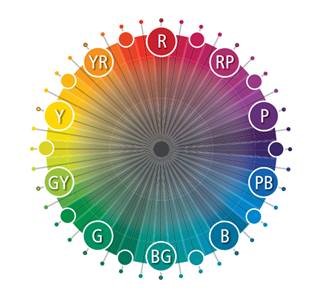

.jpeg?h=285&la=ko-KR&w=400&hash=5D089941EE51FE4C45E4A8AB077B8E7E04BC5FC2)


